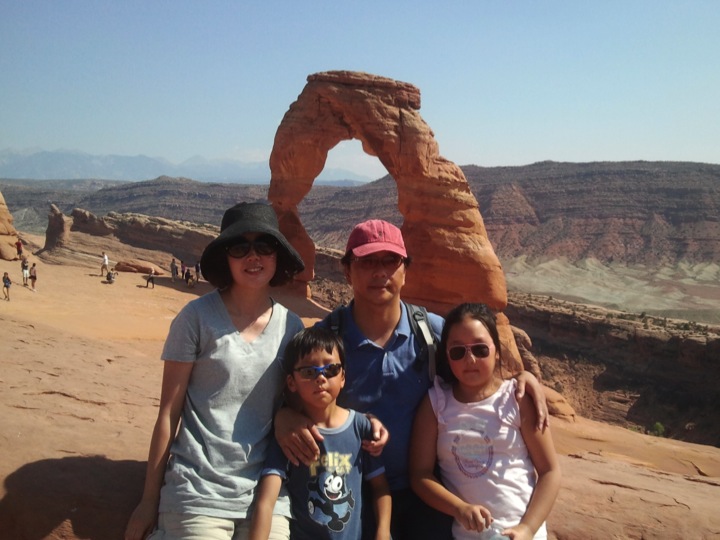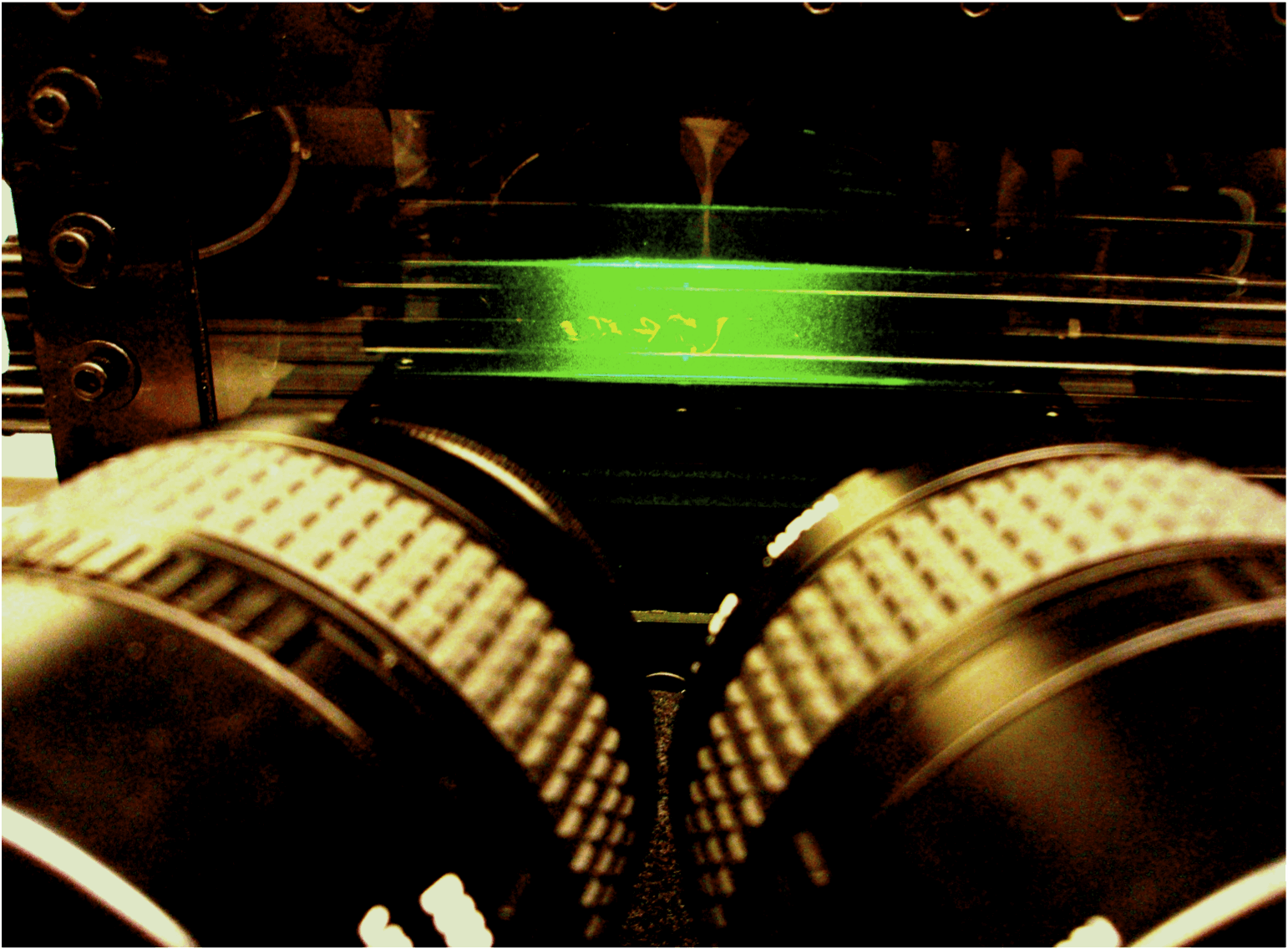Global Announcements
Spotlight
Jae-Jin Kim

Education: Undergraduate University: Seoul National University - Atmospheric Science MS: Gwangju Institute of Science and Technology - Environmental Engineering PhD: Gwangju Institute of Science and Technology - Environmental Engineering
Program: Visiting Professor 2012-2014
Research Interests: Urban Atmospheric Environment
Publications:
(1) Kim, J.-J., and J.-J. Baik, 1999: A numerical study of thermal effects on flow and pollutant dispersion in urban street canyons. Journal of Applied Meteorology, 38, 1249-1261.
(2) Baik, J.-J., and J.-J. Kim, 1999: A numerical study of flow and pollutant dispersion characteristics in urban street canyons. Journal of Applied Meteorology, 38, 1576-1589.
(3) Baik, J.-J., R.-S. Park, H.-Y. Chun, and J.-J. Kim, 2000: A laboratory model of urban street-canyon flows. Journal of Applied Meteorology, 39, 1592-1600.
(4) Kim, J.-J., and J.-J. Baik, 2001: Urban street-canyon flows with bottom heating. Atmospheric Environment, 35, 3395-3404.
(5) Kim, J.-J., J.-J. Baik, and H.-Y. Chun, 2001: Two-dimensional numerical modeling of flow and dispersion in the presence of hill and buildings. Journal of Wind Engineering and Industrial Aerodynamics, 89, 947-966.
(6) Baik, J.-J., and J.-J. Kim, 2002: On the escape of pollutants from urban street canyons. Atmospheric Environment, 36, 527-536.
(7) Kim, J.-J., and J.-J. Baik, 2003: Effects of inflow turbulence intensity on flow and pollutant dispersion in an urban street canyon. Journal of Wind Engineering and Industrial Aerodynamics, 91, 309-329.
(8) Baik, J.-J., J.-J. Kim, and H. J. S. Fernando, 2003: A CFD model for simulating urban flow and dispersion. Journal of Applied Meteorology, 42, 1636-1648.
(9) Kim, S.-O., J.-J. Kim, S.-T. Yun, and K.-W. Kim, 2003: Numerical and experimental studies on cadmium (II) transport in kaolinte clay under electrical fields. Water, Air, and Soil Pollution, 150, 135-162.
(10) Kim, J.-J., and J.-J. Baik, 2004: A numerical study of the effects of ambient wind direction on flow and dispersion in urban street canyons using the RNG k-? turbulence model. Atmospheric Environment, 38, 3039-3048.
(11) Kim, S.-O., J.-J. Kim, K.-W. Kim, and S.-T. Yun, 2004: Models and experiments on electrokinetic removal of Pb(II) from kaolinite clay. Separation Science and Technology, 39, 1927-1951.
(12) Kim, J.-J., and J.-J. Baik, 2005: Physical Experiments to Investigate Urban Street-Canyon Flow. Advances in Atmospheric Science, 22, 230-237.
(13) Baik, J.-J., R.-S. Park, and J.-J. Kim, 2005: Dependency of the horizontal length of cavity region on Reynolds number and ridge asymmetry. Journal of the Korean Meteorological Society, 41, 473-479.
(14) Kim, J.-J., and J.-J. Baik, 2005: An investigation of flow and scalar dispersion in an urban area using a CFD model. Journal of the Korean Meteorological Society, 41, 821-837.
(15) Kim, J.-J., and J.-J. Baik, 2005: Classification of flow regimes in urban street canyons using a CFD model. Journal of Korean Society for Atmospheric Environment, 21, 525-535.
(16) Kim, J.-J., H.-J. Song, and J.-J. Baik, 2006: Modeling flow and scalar dispersion around Cheomseongdae. Wind and Structures, 9(4), 315-330.
(17) Baik, J.-J., Y.-S. Kang, and J.-J. Kim, 2007: Modeling reactive pollutant dispersion in an urban street canyon. Atmospheric Environment, 41(5), 934-949.
(18) Baik, J.-J., Y.-H. Kim, J.-J. Kim, and J.-Y. Han, 2007: Effects of Boundary-Layer Stability on Urban Heat Island Induced Circulation. Theoretical and Applied Climatology, 89(1-2), 73-81.
(19) Han, J.-Y., J.-J. Kim, and J.-J. Baik, 2007: Flow regimes of continuously stratified flow over a double mountain. Atmosphere, 17(3), 231-240.
(20) Song, C.-K. J.-J. Kim, and D.-W. Song, 2007: The effects of windbreaks on reduction of suspended particles. Atmosphere, 17(4), 315-326.
(21) Kim, J.-J., 2007: The effects of obstacle aspect ratio on surrounding flows. Atmosphere, 17(4), 381-391.
(22) Kang, Y.-S., J.-J. Baik, and J.-J. Kim, 2008: Further studies of flow and reactive pollutant dispersion in a street canyon with bottom heating. Atmospheric Environment, 42(20), 4964-4975.
(23) Kim, D.-Y., J.-J. Kim, J.-H. Oh, and P. Sen, 2008: A case study on emission management for reducing photochemical pollution over the Osaka Bay area. Asia-Pacific Journal of Atmospheric Sciences, 44(4), 341-349.
(24) Kim, J.-J., and D.-Y. Kim, 2009: Effects of a building's density on flow in urban areas. Advances in Atmospheric Science, 26(1), 45-56.
(25) Baik, J.-J., S.-B. Park, and J.-J. Kim, 2009: Urban flow and dispersion simulation using a CFD model coupled to a mesoscale model. Journal of Applied Meteorology and Climatology, 48(8), 1667-1681. DOI: 10.1175/2009JAMC2066.1
(26) Lee, T.-Y., D.-Y. Kim, J.-J. Kim, J.-K. Lee, 2009: Physicoshemical characteristics and estimation of H2S emission rate from municipal solid waste at the environmental facilities in Busan city. Korea Geo-Environmental Society. 10(2), 13-20.
(27) Lee, J.-H., J.-W. Choi, J.-J. Kim, Y.-C. Suh, 2009: The effects of an urban renewal plan on detailed air flows in an urban area. The Korean Association of Geographic Information Studies. 12(2), 69-81.
(28) Kim, J.-J., and J.-J. Baik, 2010: Effects of street-bottom and building-roof heating on flow in three-dimensional street canyons. Advances in Atmospheric Science, 27(3), 513-527, DOI: 10.1007/s00376-009-9095-2.
(29) Choi, J.-W., Y.-S. Lee, J.-J. Kim, 2010: Effects of meteorological and reclaiming conditions on the reduction of suspended particles. Journal of the Environmental Sciences. 19(11), 1423-1436.
(30) Cheong, H.-B., I.-H. Kwon, H.-G. Kang, J.-R. Park, H.-J. Han, and J.-J. Kim, 2011: Tropical cyclone track and intensity prediction with a structure adjustable balanced vortex. Asia-Pacific Journal of Atmospheric Sciences, 47(3), 293-303.
(31) Woo, J.-H., H.-S. Kim, S.-B. Lim, J.-J. Kim, J. Lee, R. Ryoo, H. Kim, and L. D. Minh, 2011: Constructing u-City of Seoul by future foresight analysis. Concurrency and Computation: Practice and Experience, 23(10), 1114-1126.
(32) Y.-S. Lee, J.-J. Kim, 2011: Effects of an apartment complex on flow and dispersion in an urban area. Atmosphere. 21(1), 95-108.
(33) Kim, M., R. Park, and J.-J. Kim, 2012: Urban air quality modeling with full O3-NOx-VOC chemistry: Implications for O3 and PM air quality in a street canyon. Atmospheric Environment, 47, 330-343.
(34) Yeom, J.-M., K.-S. Han, and J.-J. Kim, 2012: Evaluation on penetration rate of cloud for incoming solar radiation using geostationary satellite data. Asia-Pacific Journal of Atmospheric Sciences, 48(2), 115-123.
(35) Kim, D.-Y., J.-Y. Kim, and J.-J. Kim, 2012: A regression-based statistical correction of mesoscale simulations for near-surface wind speed using remotely sensed surface observations. Asia-Pacific Journal of Atmospheric Sciences, 48(4), 449-456.
(36) Choi, H.-W., D.-Y. Kim, J.-J. Kim, K.-Y. Kim, J.-H. Woo, 2012: Study on Dispersion Characteristics for Fire Scenarios in an Urban Area Using a CFD-WRF Coupled Model. Atmosphere., 22(1), 47-55.
(37) Kim, D.-Y., J.-Y. Kim, and J.-J. Kim, 2013: Mesoscale simulations of multi-decadal variability in the wind resource over the republic of Korea. Asia-Pacific Journal of Atmospheric Sciences, in press.
(38) Park, S.-J., D.-Y. Kim, and J.-J. Kim, 2013: Effects of Atmospheric Stability and Surface Temperature on Microscale Local Airflow. Atmosphere, in press.
Contact: jjkim@pknu.ac.kr
Website: http://urban.pknu.ac.kr





